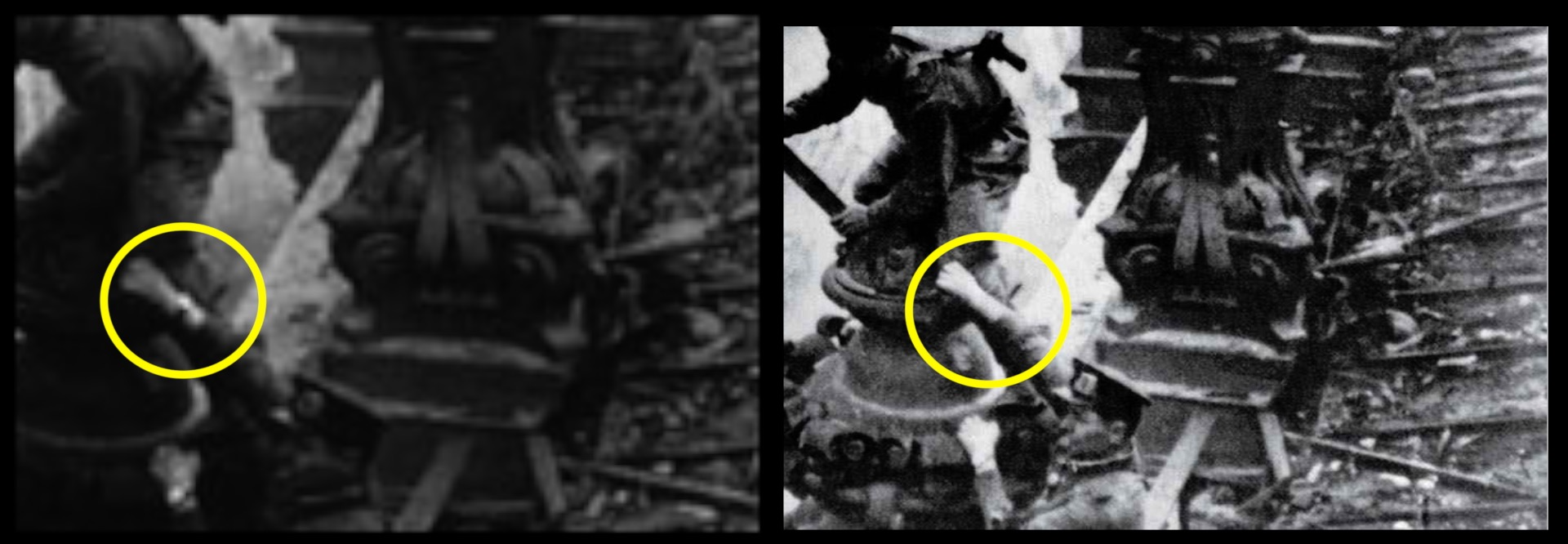The Story Behind the Raising a Flag over the Reichstag by Yevgeny Khaldei (1945)
What’s up photography fans? Last week I have talked about the photo Flag Raising on Iwo Jima, and today I would like to talk about the photo that was the Soviet’s “answer” to Rosenthal’s Iwo Jima photograph, the photo that symbolizes the victory of Red army over Nazis. Let’s talk about this iconic photo of World War 2, Raising a Flag over the Reichstag.
Raising a Flag over the Reichstag is a photograph taken by a soviet soldier, Ukrainian-born Yevgeny Khaldei. It was actually 2 days after Adolf Hitler committed suicide when Khaldei arrived in Berlin with his Leica 3 with 35mm f3.5 lens and huge Soviet flag. The flag was actually made from 3 red tablecloths. Just like the Iwo Jima photograph, this was not a first flag raised at that location. The first one was raised just a few days before this photograph was taken, but then the building was lost and when it was taken back by Soviet soldiers again the photograph was made. The other theory talks about staging the photo for the purpose of the photograph. Khaldei took a full roll of 36 pictures to take this photo.
Raising a Flag over the Reichstag by Yevgeny Khaldei (1945)
What they focused on in Moscow when printing the photograph was adjusting the contrast, shadows and darkening the sky to make the photo look more dramatic. They also removed an object from the right wrist of the soldier holding the flag which sparked a little controversy. Now, there are two theories why this was done. The first one suggests that the object that was removed was a wristwatch. Now, since the soldier already had a wristwatch on his other hand, it would look like he has stolen the second watch. This wasn’t a rare thing for any army during World War 2. Looting would actually be punishable by an execution. Now, the second theory is that the item attached to the man’s hand was just a wrist compass which was not too uncommon and it was definitely possible. Since the photographer was probably aware of that when printing the photo, he decided to remove it from soldier’s wrist.
The soldiers with the Soviet flag at the former center of the German’s government were symbolic of the victory over Nazi Germany. They were all supposed to be handpicked, but according to Khaldei, he simply picked soldiers who happened to be nearby. What I particularly like about the composition is the nice diagonal created by the flag pole (Especiall in the square format that was often used in magazines). The image was published a few days after in Ogoniok magazine and was republished in thousands of publications.
When we look at the both photos, we can really say those are the two most recognizable and significant photos of the Second World War. The Iwo Jima was taken during the fights and became a symbol of American triumph that also helped to raise over 26 billion dollars for American Army. Raising a Flag over the Reichstag was taken at the end of the war and represents the Soviet victory over the Nazi Germany. Both pictures played important roles during and after the war. They were taken thanks to the brave soldiers and we all know at what cost.
If you're interested in learning more, check out this book "Victory Banner Over the Reichstag: Film, Document and Ritual in Russia's Contested Memory of World War II" is a fascinating exploration of one of the most iconic images from World War II. In the photograph, a Russian soldier raises a red flag atop the ruins of the German Reichstag on April 30, 1945. Known as the Victory Banner, this emblem has come to symbolize Russian triumph, glory, and patriotism. The book offers valuable insights for photographers interested in capturing the essence of significant historical moments and the power of imagery in shaping collective memory.
Author Jeremy Hicks examines how and why this symbol was created, the changing media of its expression, and the contested evolution of its message. The book delves into the Victory Banner's association with Stalinism and communism, as well as its eventual adoption of Russian nationalist meaning. Hicks demonstrates how this symbol has been used by the Soviets, and later Vladimir Putin, to construct a powerful mythology of Russian greatness.
This book is an essential resource for practicing photographers who want to understand the impact of photography in immortalizing history, as well as the importance of context and the evolution of symbolism in images. It offers an in-depth look into the power of photography to shape collective memory, national identity, and the politics of representation.
If you want to find more information here are some sources and interesting pages:
Why the Soviets doctored this iconic photo VOX (not that accurate)
What’s the context? 2 May 1945: Raising a Flag over the Reichstag
Evgueni Khaldei, photographer under Stalin
Leica III Behind Iconic ‘Flag Over Reichstag’ Photo Going Up for Auction in November


